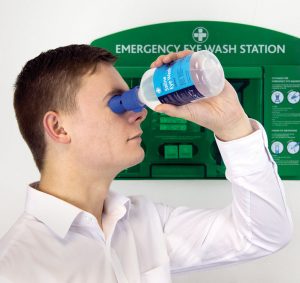Eye injury is one of the most common injuries in the workplace. It usually happens among workers at small-scale industrial enterprises. Eye injury can be mild and serious as lost of eyesight. Eye injury can be prevented with proper safety equipment. However, this contradicts the number of eye injuries being reported. In the US, each day about 2000 workers sustain a job-related eye injury that requires medical treatment. While in Al-Ain, UAE, a research article published on May 2020 showed that in a 12-month duration, out of 500 small-scale industrial enterprises workers, one hundred fifty have reported eye injury.
This evidently shows that preventive measures are not being followed or provided to many workers. This not only results to long-term health consequences but also increases business cost because of the loss of days at work and medical treatment.
Common Causes of Eye Injuries at Work
Being aware of the causes and risks is the first step to avoiding eye injury. Based on the National Institute for Occupational Health and Safety (NIOSH) main causes are:
- Striking or scraping: The majority of eye injuries result from small particles or objects striking or scraping the eye, such as: dust, cement chips, metal slivers, and wood chips. These materials are often ejected by tools, windblown, or fall from above a worker. Large objects may also strike the eye or face, or a worker may run into an object causing blunt-force trauma to the eyeball or eye socket.
- Penetration: Objects like nails, staples, or slivers of wood or metal can go through the eyeball and result in a permanent loss of vision.
- Chemical and thermal burns: Industrial chemicals or cleaning products are common causes of chemical burns to one or both eyes. Thermal burns to the eye also occur, often among welders. These burns routinely damage workers’ eyes and surrounding tissue.

Image by freepik.com
Prevention
Eye protection are made to prevent injuries from happening. However, though they are easy to access and are available everywhere, the reports of injuries are still high. Based on the article published on the same article where 500 workers from Al-Ain, UAE, where interviewed, the overall data showed that the workers who had an eye injury were either having less work experience, have had less safety training, or were less compliant with the usage of goggles and safety glasses. So, what can employees and employers do to reduce or prevent eye injury at work.
Employees
- Do not underestimate safety eyewear, face shields, or full face respirators as these can save you from a terrible injury.
- Make sure that your safety glasses or PPE fits perfectly to your face. If not, request for a replacement from your management.
Employers
- Provide your employees with standard compliant safety glasses that are adjustable to provide appropriate coverage and it should be comfortable and allow for sufficient peripheral vision.
- Conduct hazard assessment to know what kind of protective eyewear and PPEs your employees need.
- Ensure engineering controls are used to reduce eye injuries and to protect against ocular infection exposures.
- Conduct a regular first aid and safety trainings to all the employees to provide them with proper education on how to avoid risks, prevent causing these risks, and be prepared whenever someone gets injured.
- Make sure there are eye wash or eye irrigating solution kits and stations around the work area to ensure that employees can quickly treat eye irritations, flush eye irritants immediately, and avoid eye injury or worsening of the injury.
If the injury a worker is at risk of is something that’s preventable, the employer is lucky because they can always do something to keep their workers safe. The same goes for employees whos effort largely affects the effectivity of the preventive measures his/her employer implements.
Source:
https://www.cdc.gov/niosh/topics/eye/default.html
https://www.tandfonline.com/doi/abs/10.1080/09286586.2020.1770302?journalCode=iope20

